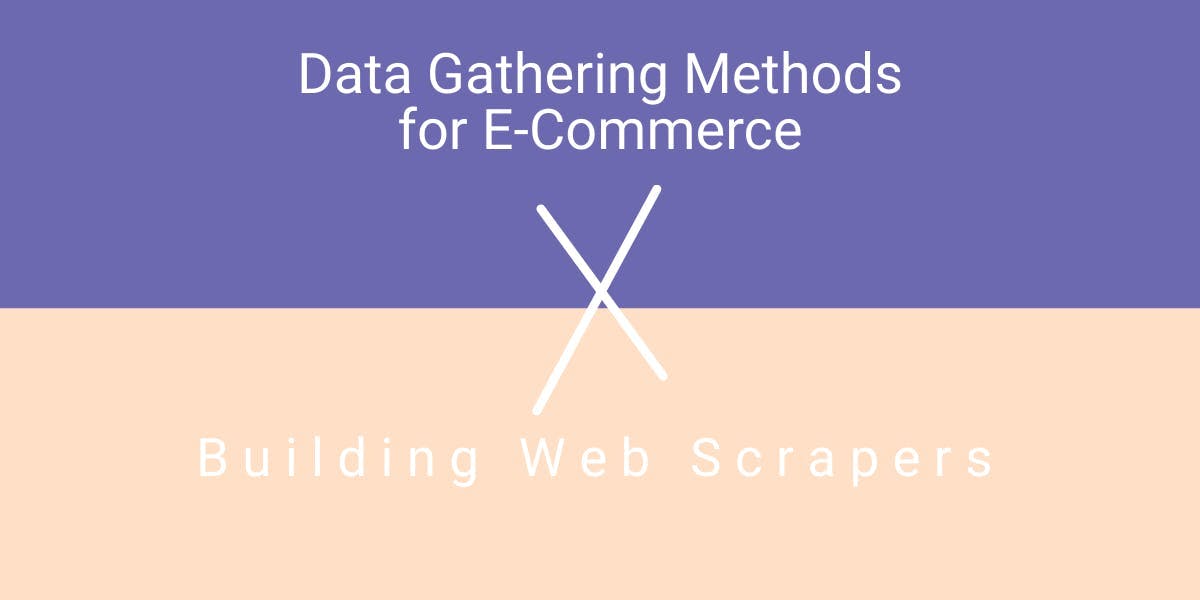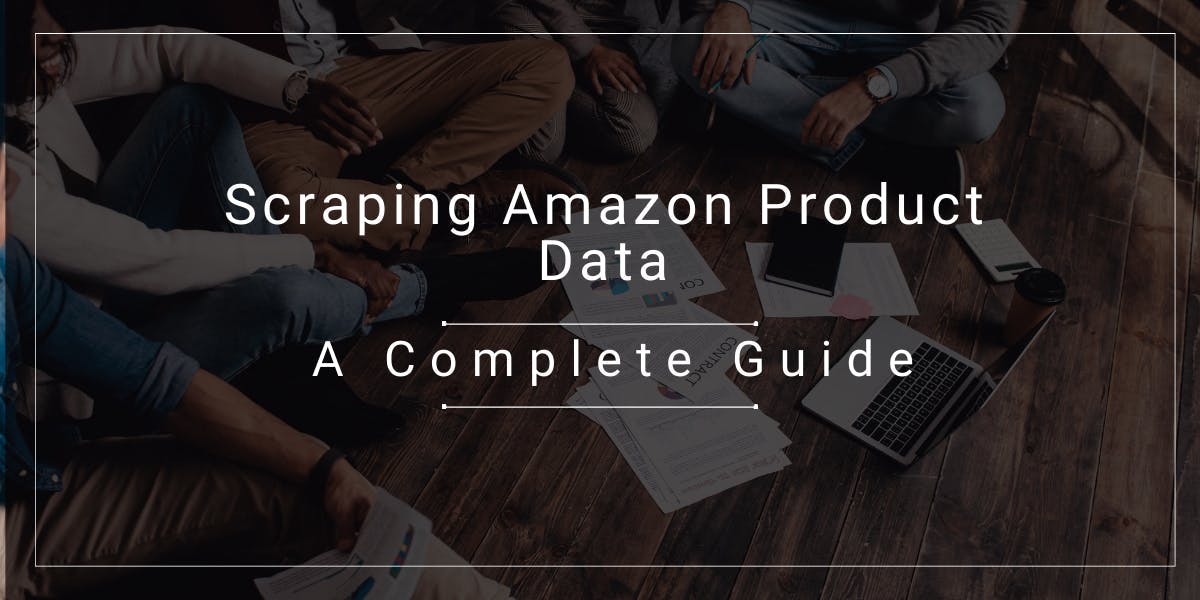Data Gathering Methods for E-Commerce: Building Web Scrapers
Flipnode on Jun 06 2023

Web scrapers are a popular and extensively utilized method for gathering data. While creating a web scraper does require programming knowledge, the overall process is simpler than it may initially appear.
However, the success of these projects relies on various factors, including the complexity of the target websites and the presence of anti-bot measures. When using web scraping for professional purposes such as long-term data acquisition or pricing intelligence, it is essential to continuously maintain and manage the scraper. In this article, we will provide an overview of the fundamental aspects of building a web scraper and address the common challenges that newcomers may encounter.
What is web scraping used for?
Web scraping is the process of extracting data from websites automatically. It involves using automated tools or scripts to navigate web pages, gather information, and store it in a structured format for further analysis or use. Web scraping is commonly used for various purposes, including:
- Data extraction: Web scraping allows you to extract data from websites that don't offer an API or provide limited data access. You can scrape information such as product details, prices, reviews, news articles, weather data, stock prices, and more.
- Market research: Web scraping helps gather data on competitors, market trends, customer reviews, and pricing information. This data can be used to gain insights and make informed business decisions.
- Content aggregation: Web scraping can be used to aggregate content from different sources and create a centralized database or website. News aggregators, job boards, and real estate listings websites often use web scraping to collect and display information from multiple sites.
- Lead generation: Web scraping enables the extraction of contact information, such as email addresses and phone numbers, from websites. This data can be valuable for sales and marketing purposes, allowing businesses to generate leads and reach out to potential customers.
- Academic research: Researchers can utilize web scraping to collect data for academic studies, including social media analysis, sentiment analysis, and opinion mining. It provides a way to access large volumes of data quickly, enabling researchers to analyze trends and patterns.
- Monitoring and tracking: Web scraping can be used to monitor websites for changes in content, prices, or availability of products. This information can be useful for price comparison, stock monitoring, or tracking competitors' activities.
- Machine learning and AI training: Web scraping can provide data for training machine learning models or AI algorithms. By scraping data from various sources, you can create large datasets to train models for text classification, sentiment analysis, image recognition, and more.
It's important to note that when performing web scraping, you should always respect the website's terms of service, be mindful of legal and ethical considerations, and ensure that you're not violating any laws or regulations.
Developing a basic web scraper
One crucial aspect of data gathering is building a scraping path, which involves collecting the URLs from which data will be extracted. While gathering a few URLs may seem straightforward, creating an effective scraping path requires careful attention and effort.
Building a scraping path may involve additional steps, especially when specific URLs need to be obtained by scraping the initial page. For example, in the case of ecommerce websites, each product has its own URL and product page. Creating a scraping path for specific products on an ecommerce website would involve the following steps:
- Scrape the search page.
- Parse the product page URLs.
- Scrape the obtained URLs.
- Parse the data based on defined criteria.
Thus, building a scraping path is not as simple as assembling a collection of readily available URLs. Developing an automated process ensures that no important URLs are overlooked.
All subsequent parsing and analysis efforts rely on the data acquired from the URLs outlined in the scraping path. The quality of insights obtained is directly influenced by the data collected. If key sources are missing, the results, particularly in dynamic pricing, can become inaccurate and irrelevant.
Building a scraping path requires industry knowledge and familiarity with specific competitors. Careful and strategic collection of URLs is essential to initiate the data acquisition process.
Furthermore, data is typically stored in two stages: pre-parsed (short-term) and long-term storage. Continuous updates are vital for any data gathering method to remain effective, as the freshness of the data directly impacts its value.
Data extraction scripts
Developing a data extraction script requires prior knowledge of coding. While there are various options available, Python is commonly used due to its extensive libraries that simplify extraction, parsing, and analysis tasks in web scraping.
The development process of a data extraction script typically involves the following stages:
- Determining the type of data to be extracted (e.g., pricing or product data).
- Identifying where and how the data is structured within the source.
- Installing and importing the necessary libraries (e.g., BeautifulSoup for parsing, JSON or CSV for output).
- Writing the data extraction script.
The first step is usually straightforward. The second step becomes interesting as different data types are often presented or encoded in unique ways. In the ideal scenario, data across various URLs is consistently organized using the same classes or tags, eliminating the need for complex scripts. Inspecting elements in a modern browser's "Inspect" feature can help easily identify classes and tags. However, retrieving pricing data can pose challenges.
Pricing or other data might be concealed within JavaScript elements and may not be initially visible in the response. Regular data gathering methods, employed by Python libraries for XML and HTML scraping and parsing (such as BeautifulSoup and LXML), cannot access JavaScript elements without additional tools. To scrape these elements, a headless browser is required.
Headless Browser
Headless browsers and web drivers are commonly used tools for scraping data from JavaScript elements. Another option is to use web drivers, which are provided by widely used browsers. However, web drivers tend to be slower as they load pages similar to regular web browsers, resulting in potentially slightly different scraping outcomes. It is beneficial to test both options and determine the most suitable one for each project.
There are several choices available, with the two most popular browsers, Chrome (with a 68.60% market share) and Firefox (with an 8.17% market share), offering headless modes. Apart from these mainstream options, PhantomJS and Zombie.JS are popular choices among web scrapers. Furthermore, running web scraping scripts with headless browsers requires automation tools, and the Selenium framework is the most widely used for this purpose.
Data parsing
Data parsing plays a crucial role in transforming the acquired data into a format that is understandable and usable for humans. Many data gathering methods generate results that are difficult to comprehend without proper parsing and structuring.
Python is widely favored for acquiring pricing intelligence due to its extensive range of accessible and optimized libraries. Popular choices for data parsing include Beautiful Soup, LXML, and other similar options.
Parsing enables developers to extract specific portions of HTML or XML files by searching for relevant elements. Parsing libraries like Beautiful Soup provide built-in objects and commands that simplify the parsing process. These libraries often facilitate navigation through large datasets by offering search and print commands tailored to HTML/XML document elements.
Data storage
Data storage procedures vary depending on the volume and type of data. For continuous projects like pricing intelligence, it is recommended to build a dedicated database. However, for shorter or one-off projects, storing data in CSV or JSON files is a viable option.
Data storage itself is a relatively straightforward process with few complications. However, it is crucial to maintain cleanliness and ensure proper indexing of databases. Starting with well-defined guidelines and adhering to them consistently can prevent potential data storage issues.
Long-term data storage marks the final step in the data acquisition journey. Developing data extraction scripts, identifying target sources, parsing and storing data are relatively straightforward tasks. The real challenge lies in navigating through bot detection algorithms and avoiding blocked IP addresses. Overcoming these challenges is vital to ensure uninterrupted data acquisition and storage.
Proxy management
Web scraping may initially appear straightforward: create a script, utilize the appropriate libraries, and export the collected data to a CSV or JSON file. However, in reality, many website owners are hesitant to share large amounts of data with external parties.
Modern web pages are equipped with mechanisms to detect bot-like behavior and can block IP addresses or entire networks engaging in such activity. Data extraction scripts function similarly to bots, as they continuously access a list of URLs in a looped process. Consequently, web scraping often results in IP address blocks.
To ensure uninterrupted access to desired URLs and overcome IP blocks, proxies play a crucial role in data acquisition projects. Implementing a target-specific proxy strategy is essential for the success of such projects, enabling continuous access to the desired data while circumventing IP restrictions.
Residential proxies are commonly employed in data gathering projects. These proxies enable users to send requests from regular machines, bypassing geographical and other restrictions. By imitating regular internet user activity, residential proxies help maintain the user's identity.
However, it's important to note that bot detection algorithms also target proxies. Thus, acquiring and managing premium proxies is crucial for successful data acquisition. Address rotation plays a significant role in avoiding IP blocks.
Nevertheless, proxy rotation presents ongoing challenges. Bot detection algorithms differ significantly across targets. High-profile e-commerce websites and search engines employ sophisticated anti-botting measures, necessitating the utilization of diverse scraping strategies. Adaptability is key in such scenarios.
Proxies against the world
As mentioned earlier, the rotation of proxies plays a crucial role in the success of web scraping and other data gathering methods. To avoid blocked IP addresses, it is essential to emulate the behavior of a regular internet user.
However, the specific details of proxy management, such as the frequency of proxy changes and the type of proxies to be used, vary depending on the scraping targets, data extraction frequency, and other factors. These complexities make proxy management the most challenging aspect of web scraping.
While each business case requires unique solutions, following guidelines is essential to maximize the efficiency of proxy usage. Experienced companies in the data gathering industry possess a deep understanding of bot detection algorithms. Based on their case studies, proxy and data gathering tool providers develop guidelines to help avoid blocked IP addresses.
As previously mentioned, maintaining the image of a regular internet user is crucial in preventing IP blocks. Among various proxy types, residential proxies excel in this task. Residential proxies are IP addresses assigned to real machines by Internet Service Providers. Opting for residential proxies when conducting e-commerce data gathering significantly simplifies the entire process from the outset.
Conclusion
In conclusion, web scraping is a powerful method for gathering data from websites, offering various applications in different industries. Building an effective web scraper requires careful planning, including creating a scraping path, using proper data extraction scripts and parsing techniques, and selecting appropriate storage methods. Proxy management is crucial to avoid IP blocks. By understanding the fundamentals and employing effective strategies, web scraping can be a valuable tool for data extraction.



